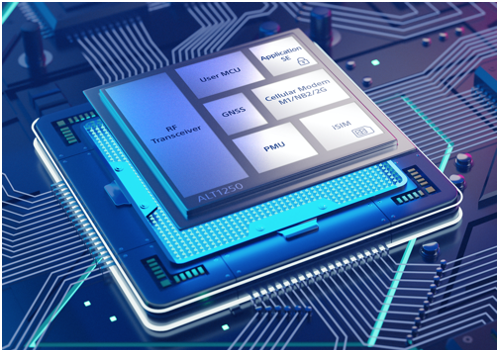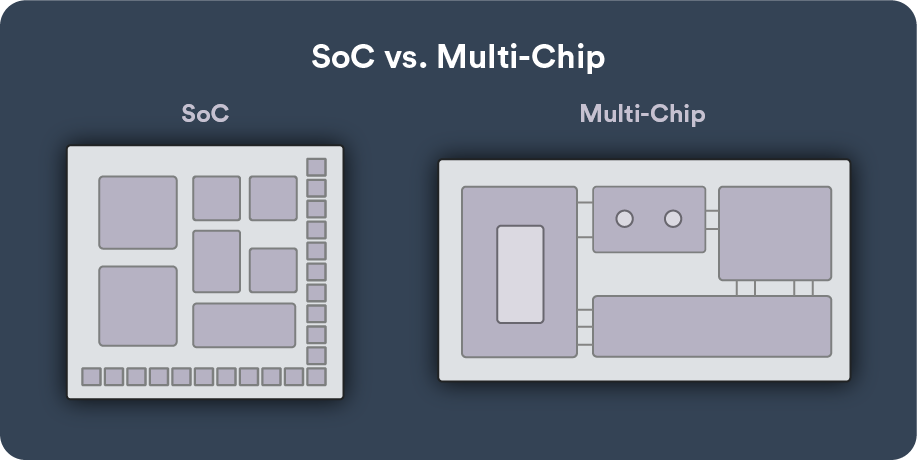The Semiconductor Journey to Today’s IoT Era

Today we take IoT’s ability to process data at high speed and provide near real-time information for granted. The functionality comes from IoT devices having powerful computing resources — resources that come in micro-sized packages that employ advanced semiconductor technology and enable a number of complex, essential tasks quickly, efficiently, and even automatically, despite their very small size, low weight and low power requirements.
This blog will examine these microchip miracles and briefly outline their development journey. This is important because processing speed is a key IoT parameter. Software programs process data one bit at a time, which was and still is inefficient. A computing process will always run faster on dedicated hardware than in software, but hardware-centric solutions are not flexible: they are dedicated to a single application. However, as chip speeds improved, they got fast enough to mask the one bit at a time constraint, thereby enabling software to run efficiently on commodity hardware such as IoT devices. Moreover software-centric solutions are intrinsically flexible. Software is simply a set of instructions that tell the hardware what to do and they can be modified at any time.
The development journey
Since the early 20th century, the progression of electronics has followed a predictable path regarding two major trends: miniaturization and integration. Miniaturisation has seen individual electronic components such as capacitors, resistors and transistors get progressively smaller. And with the invention of the development of the integrated circuit (IC) in 1958, integration has combined multiple electronic components onto a single piece of silicon, allowing for even further miniaturisation. Putting more elements on a single piece of silicon lowers power requirements, reduces cost, increases performance and reduces their size. ICs, aka microchips, eliminated the earlier need to interconnect discrete elements, which impacted the speed at which data could be transmitted. They integrate thousands or millions of tiny resistors, capacitors, diodes and transistors.
As it becomes more difficult to manufacture ever smaller transistors, the marketed started using multi-chip modules (MCMs). As shown in figure 1 on the right, they employ multiple ICs and some discrete components that are integrated on a unifying substrate. This allows them to be treated as if they were a larger IC that can be encapsulated by a plastic moulding. They offer better performance, but the physical interconnections can impact on data transfer rates. This is because the electrical resistance of the wires increases as they are made thinner to accommodate the small size requirement.

SoCs (Systems on a Chip)
As the term suggests, a SoC is an entire system on a single chip. The individual components typically incorporate a central processing unit, input and output ports, internal memory, as well as analog input and output blocks among other things. This reduced the size of the system to that of the chip, e.g., 10x10mm.

SoCs are designed for fully functional IoT applications that will typically include a baseband processor, RF transceiver, memory, cellular based location, MCU (microcontroller unit) and a hardware based iSIM, which stores network credentials and sits inside a secure element within the SOC. Security in the IoT era is crucial. Sony’s Altair SoCs integrate a multi-layered security architecture that enables a high level of security for applications running on the chipset.
Global asset tracking
Asset tracking is a demanding application. It includes just-in-time shipping for some sectors, plus end-to-end quality control, both of which are enabled by IoT sensors. For example, sensors are used to monitor the condition of perishable goods in real time. Sensors are also employed to monitor events such as containers being dropped or damaged. Vibration and shock can damage delicate manufactured products. In addition security must be maintained across multimodal supply chains.
The asset trackers clearly play a pivotal, equally demanding role. Most are designed for mobility. The devices need to be small, robust, ultra-reliable and operate on batteries for several years, while not compromising on the ability to deliver reliable location and asset data. Sony’s Altair’s SoCs have the requisite functionality. They provide low power, wide-area connectivity, while maintaining the device’s low-power consumption and enabling years of battery life.
To company’s OneSKU™ RF technology enables support of any LTE band combination on a single hardware or module design. This provides module and device vendors with a global solution without increasing solution size or cost.
Sierra Wireless’ HL78 LTE-M and NB-IoT LPWA modules employ these SoCs. They support Cat-M1 and Cat-NB2 networks around the world and are for real-time mobile applications such as asset or cold chain tracking. The functionality helps ensure that assets are not compromised, and that there is complete transparency throughout their journey.
One way of optimising power for asset trackers involves adding motion sensing capabilities and only reporting if the device is on the move. Once the device has stopped moving it is meant to stay in the same location until the next time it moves, saving the need to report back to the server during this time. For more on this, see the new report ‘IoT for Logistics: Managing Supply Chains Everywhere’, available via free download at www.iotforlogistics.com.
News | Blog